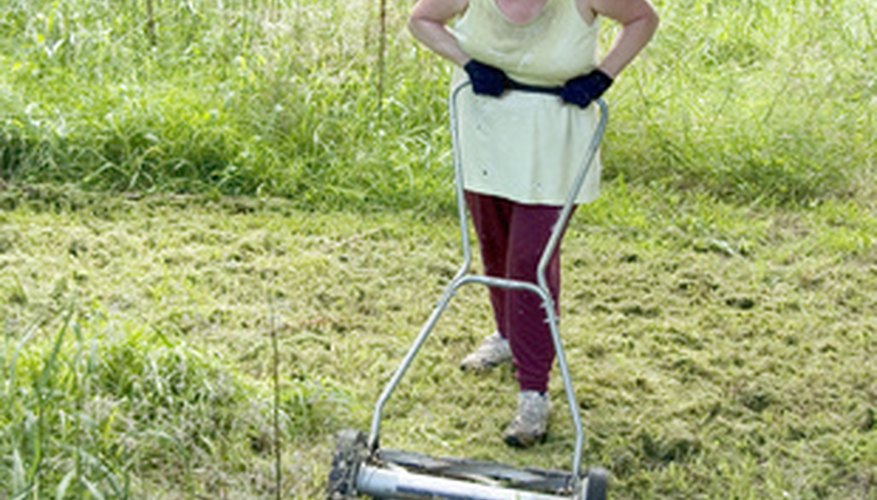Learning how to sharpen a cylinder mower blade (also known as a reel type mower) is extremely important. Most reel type mowers are not powered by an engine or motor, instead relying on the walking force of the operator to spin the cutting blades. Thus, a dull blade means more work for the operator. Lightweight and very simple to operate, these mowers will last for many years with almost no operating costs. An annual blade sharpening will enable the average homeowner to keep their mower efficient for many years. Sharpening is a procedure that once learnt (regardless of make and model mower), will only take about 20 minutes to accomplish, yet pays dividends during each mowing all year long.
- Learning how to sharpen a cylinder mower blade (also known as a reel type mower) is extremely important.
- Sharpening is a procedure that once learnt (regardless of make and model mower), will only take about 20 minutes to accomplish, yet pays dividends during each mowing all year long.
Park your mower on a flat level surface, preferably on top of a clean dust sheet to catch any mess made while sharpening the blades. Take off the control handle (handle bars) to get them out of your way while you are sharpening. This usually requires a socket set, and the removal of four bolts. Tip the mower body onto its side, and make sure it is secure and does not rock back and forth.
Remove one of the side covers (hubcaps) over one of the mower drive wheels. Usually, they just pop right off with a slotted screwdriver. This will reveal a small metal ring -- also known as a cir-clip -- that holds the wheel onto the mower. Remove the cir-clip with a small slotted screwdriver and needlenose pliers.
Slide the wheel off the axle, by revolving it slightly as you pull it toward you. Next, remove the drive gear that sits just beneath the wheel. This gear allows the wheels to revolve the blades. The gear will pull straight out without using any tools.
- Remove one of the side covers (hubcaps) over one of the mower drive wheels.
- Next, remove the drive gear that sits just beneath the wheel.
Take the hand crank lever, included with the required reel sharpening kit, and carefully slide it onto the shaft that the gear was previously attached to. This will enable you to turn the blades manually, instead of the drive wheels doing so. The crank lever is designed to allow you to spin the blades backward while sharpening, which is critical to sharpening reel blades.
Open the plastic container of sharpening paste that was included in the sharpening kit, and apply some sharpening compound to the paint brush that was also included. Dip the brush in the paste. Using the brush, apply the sharpening paste evenly onto all the blades on the reel -- usually there are four or five. The paste needs only to be applied to the cutting edge of all the blades.
- Take the hand crank lever, included with the required reel sharpening kit, and carefully slide it onto the shaft that the gear was previously attached to.
- Using the brush, apply the sharpening paste evenly onto all the blades on the reel -- usually there are four or five.
Crank the lever, and turn the blades backward -- in the opposite direction than when mowing. You will see the paste is drawn between the blade and the blade guard - and rubbing at this junction. As this rubbing occurs, the paste is actually sharpening the blade through frictional wear. In spots you will begin to see a clean shiny blade edge emerge containing no paste. This is the newly sharpened part of the blade.
Continue to sharpen the blades. Keep turning the crank handle until all blades have at least a 6 mm (1/4 inch) wide strip of clean shiny blade surface visible. Once all blades have a new edge, you may stop sharpening. Remove all remaining paste with a clean rag. Assemble the mower using the reverse of the dissassembly instructions. Test for normal operation.
- Crank the lever, and turn the blades backward -- in the opposite direction than when mowing.
- Once all blades have a new edge, you may stop sharpening.
TIP
More paste may be added to the blades during sharpening to ensure that they remain coated with abrasive during the process.
WARNING
Wear work gloves while removing the excess paste after sharpening, because the blades are now sharp enough to cut your fingers.
